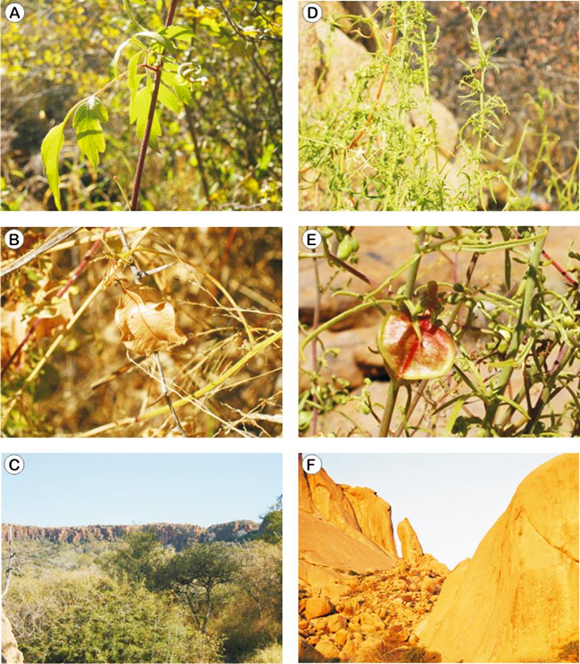The role of extreme long-distance dispersal (ELDD) has been neglected in shaping the global distribution of flowering plants. This is partly because of the rarity of such events. Recently a renewed interest in ELDD has surfaced, as new tools have become available to identify ELDD events.
Balloon vines, in the genus Cardiospermum, are mainly found in South and Central America, with one native species, C. pechuelii, found in Namibia’s Namib Desert. A recent study by C·I·B student, Enelge Gildenhuys identified a second species native to southern Africa, C. corindum. What makes this finding perculiar is the fact that C. corindum is also considered native to South America. This led Gildenhuys to ask what the genetic relationships are between the Namib endemic, C. pechuelii, and C. corindum from southern Africa and South America.
Using phylogenetic and population genetic approaches, Gildenhuys showed that C. corindum in southern Africa represents a natural ELDD event from South America. Seeds of balloon vines can float in seawater and remain viable for months, fitting Gildenhuys’ hypothesis of intercontinental trans-oceanic dispersal. More interestingly, Gildenhuys found that while C. corindum from both continents are morphologically more similar to each other than they are to Namibian C. pechuelii, and that African C. corindum are genetically more closely related to C. pechuelii than to South American C. corindum. These findings suggest that the desert-adapted C. pechuelii likely evolved from C. corindum following trans-oceanic dispersal from South America.
This study highlights the importance of ELDD events by showing how a subtropical species from South America spread across the ocean to arrive in the Namib Desert in southern Africa and gave rise to a new desert-adapted species.
Read the paper
For more information, contact Enelge Gildenhuys at enelge.gildenhuys@gmail.com, or Jaco Le Roux at jleroux@sun.ac.za


